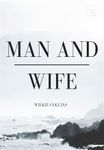81 books
-
1. Mari et Femme

La jeune Anne Sylvester est la fille de l"épouse déchue d"un gentleman anglais. Anne est recueillie par la meilleure amie de sa mère quand celle-ci décède, et devient la préceptrice de sa fille, Blanche. Une amitié très forte lie les deux jeunes femmes. Mais alors que le bonheur semble promis à toutes deux, le destin s"acharne sur Anne: elle s"est éprise d"un jeune homme de bonne famille qui, pour la séduire lui promet le mariage alors qu"il ne pense qu"à une jeune et riche veuve... Ce roman plein d"humour et riche en rebondissements, est l"occasion pour Wilkie Collins de dénoncer les lois du mariage dans le Royaume-Uni en cette fin du XIXe siècle, qui n"accordent aucun droit aux femmes.
-
5. La pierre de lune
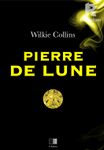
Un magnifique diamant venu des Indes....un vol dans des circonstances mystérieuses....une enquête avec de nombreux suspects....et d’inquiétants brahmanes qui depuis des générations cherchent à récupérer la pierre sacrée. Wilkie Collins, avec une intrigue passionnante et haletante, signe ici le premier roman policier de l’histoire de la littérature, un véritable chef-d'oeuvre du genre marqué par un suspense haletant et une atmosphère angoissante.
-
6. Mari et Femme

Une femme déchue sur laquelle le sort s'acharne....Un beau jeune-homme prêt à tout s'enrichir....Et une meurtrière qui va rendre la situation encore plus complexe. Wilkie Collins signe ici une oeuvre engagée en faveur de la condition féminine au sein de la société victorienne dont il dénonce la misogynie et l'excès de pouvoir accordé aux hommes. Au-delà de la critique sociale, c'est aussi, comme Collins en a l'habitude, une histoire habilement ficelée dans laquelle se retrouvent amour, vengeance et trahisons.
-
7. After Dark
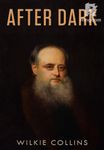
Wikie Collin's "After Dark" is a collection of six short stories. The book is a series of tales told by a poor travelling portrait-painter, William Kerby, who is forced to abandon his profession for six months in order to save his sight. Descriptions of the circumstances under which the tales were told. The tales are stories of adventure, well varied, and often striking in the incidents, or with thrilling situations. The six stories contained in the book are: The Traveller's Story of A Terribly Strange Bed The Lawyer's Story of A Stolen Letter The French Governess's Story of Sister Rose The Angler's Story of The Lady of Glenwith Grange The Nun's Story of Gabriel's Marriage The Professor's Story of The Yellow Mask.
-
8. The Haunted Hotel

A sinister Countess is driven mad by a dark secret. An innocent woman is made the instrument of retribution. A murdered man"s fury reaches beyond the grave. From the author of The Moonstone and The Woman in White comes another gripping Victorian sensation novel. When Countess Narona marries Agnes Lockwood"s fiancé and takes him to live in a rundown Venetian palace, strange things start happening, a servant mysteriously vanishes, and the husband dies a recluse. But the dead won"t rest. When the palace is transformed into a hotel the two women are drawn to its chambers, where a force stronger than death is waiting to wreak its vengeance ...
-
9. Little Novels
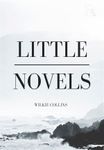
Wilkie Collins's collection of fourteen short stories published, after revision, in 1887. Unlike Collins's earlier collections, After Dark (1856) and The Queen of Hearts (1859), there is no connecting narrative but most of the stories revolve around the theme of love and marriage, frequently across the social barriers of class and money. Some also include supernatural or detective elements. The original titles and publication details are given in parentheses.
-
10. La piste du crime

Valéria refuse de croire aux rumeurs qui pèsent sur l'homme qu'elle vient d'épouser et va mener l'enquête pour rétablir la vérité à son sujet. Mais découvrira-t-elle ce lourd secret en relation avec son passé ? Arrivera-t-elle réellement à prouver son innocence ? Un ouvrage de suspense et de romance dans lequel Wilkie Collins égraine au fil des pages des indices qu'il laisse le soin au lecteur de rassembler.
-
13. Blind Love

Blind Love by Wilkie Collins. Blind Love is Wilkie Collin's final novel. Although he did not live to complete the work, he left detailed plans for the last third of this novel which were faithfully executed by his colleague, the popular author Sir Walter Besant. The novel is set during the Irish Land War of the early 1880s and tells the story of Iris Henley, an independent young woman who marries the "wild" Lord Harry Norland, a member of an Irish secret society, and becomes unhappily drawn into a conspiracy plot."
-
16. The Woman in White
A mystery novel of the 'sensation' genre, published in 1860. The Woman in White is a mystery novel made up of eleven Parts. There are a number of narrators throughout the story, often one per Part. The main narrator is Walter Hartright, who relies on the others as "witnesses" to describe events that took place during his absence. Each narrator holds information regarding the central mystery. The story begins from Walter Hartright's perspective. He obtains a position as a drawing master at an estate in Cumberland. On his way there, he meets a woman dressed entirely in white. This strange woman asks him for directions and he assists her. Once they part ways, Walter overhears a policeman asking a passerby if he had seen a woman dressed all in white. This woman had escaped an insane asylum and needed to be escorted back. Walter wonders if he has assisted a dangerous woman as he journeys on to Cumberland. After his arrival, Walter meets his two pupils, half-sisters Marian and Laura, and the head of the estate, Sir Frederick Fairlie, who is Laura's uncle. Soon we see Walter and Laura falling in love. Unfortunately, she is engaged to another man, Sir Percival Glyde. At the same time, Laura receives an anonymous letter warning her that her betrothed is a horrible man and to stay away from him at all costs. After some investigation, Walter and Marian conclude that the warning letter came from the woman in white. Can the woman's word be trusted or is she insane? After more investigation, no evidence against Sir Percival Glyde's character can be found. Once Walter is sure of Laura's well-being, he decides to leave his position as drawing master earlier than planned, as to spare the girl unnecessary pain. Walter ends up leaving the continent to start fresh. Here, the other narrators take over for awhile. Once Laura and Sir Percival are married, his true colors begin to show. Marian resides with the Glydes at Percival's estate, for Laura's sake. We are introduced to Percival's foreign friend, Count Fosco, and his wife, the Countess who also happens to be Laura's estranged aunt. Marian and Laura end up distrusting Percival, Fosco, and the Countess. The untrusting threesome seem to be scheming amongst themselves. Marian fears for her and Laura's futures. The woman in white reappears for a second warning, makes her presence known to the sisters, and alludes to Sir Percival's "secret". Marian does her best to get information out of the woman in white, all the while arousing suspicion from Percival and Fosco. It soon becomes apparent that Percival is using Laura for something, and Fosco is going to help him. He's also hiding a secret, one so important that he might be willing to send a woman to an insane asylum to keep her from revealing it. What is this secret and how far will Percival go to keep it hidden? What does he want from Laura and what will he do to get it? Can Marian protect her sister from Percival and Fosco? I was very intrigued by the plot of this book, which kept me reading even though parts were a little dull. I had to know who the woman in white really was, and why she was in the insane asylum. The characters were well developed, especially the characters who were also narrators. There were multiple twists and turns, building and unfolding the mystery. Overall, an easy and enjoyable read. I suggest this book to anyone who likes a more drawn out story. It reminded me of reading The Count of Monte Crisco.--Submitted by CLM.
-
18. The Woman in White

This is the story of what a Woman"s patience can endure, and what a Man"s resolution can achieve. If the machinery of the Law could be depended on to fathom every case of suspicion, and to conduct every process of inquiry, with moderate assistance only from the lubricating influences of oil of gold, the events which fill these pages might have claimed their share of the public attention in a Court of Justice. But the Law is still, in certain inevitable cases, the pre-engaged servant of the long purse; and the story is left to be told, for the first time, in this place. As the Judge might once have heard it, so the Reader shall hear it now. No circumstance of importance, from the beginning to the end of the disclosure, shall be related on hearsay evidence. When the writer of these introductory lines (Walter Hartright by name) happens to be more closely connected than others with the incidents to be recorded, he will describe them in his own person. When his experience fails, he will retire from the position of narrator; and his task will be continued, from the point at which he has left it off, by other persons who can speak to the circumstances under notice from their own knowledge, just as clearly and positively as he has spoken before them. Thus, the story here presented will be told by more than one pen, as the story of an offence against the laws is told in Court by more than one witness—with the same object, in both cases, to present the truth always in its most direct and most intelligible aspect; and to trace the course of one complete series of events, by making the persons who have been most closely connected with them, at each successive stage, relate their own experience, word for word.
-
20. The Woman in White
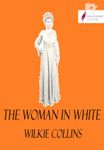
The Woman in White is Wilkie Collins"s fifth published novel, written in 1859. It is considered to be among the first mystery novels and is widely regarded as one of the first (and finest) in the genre of "sensation novels". The story is sometimes considered an early example of detective fiction with protagonist Walter Hartright employing many of the sleuthing techniques of later private detectives. The use of multiple narrators (including nearly all the principal characters) draws on Collins"s legal training, and as he points out in his preamble: "the story here presented will be told by more than one pen, as the story of an offence against the laws is told in Court by more than one witness". In 2003, Robert McCrum writing for The Observer listed The Woman in White number 23 in "the top 100 greatest novels of all time", and the novel was listed at number 77 on the BBC"s survey The Big Read. William Wilkie Collins (8 January 1824 – 23 September 1889) was an English novelist, playwright and short story writer best known for The Woman in White (1859) and The Moonstone (1868).







